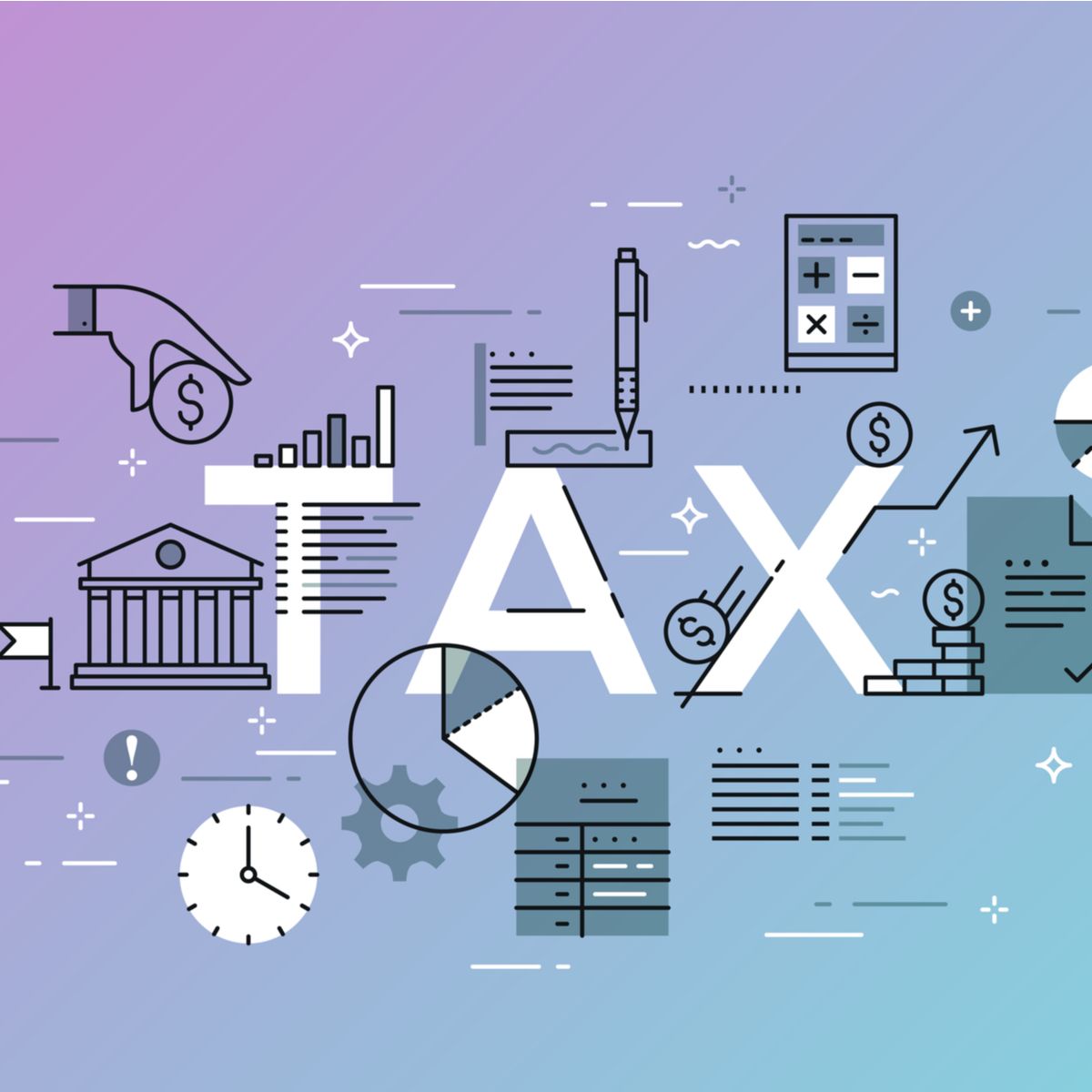Qualifying for the Home Office Deduction
Working from home can certainly provide you with personal benefits, such as a flexible schedule and more family time. But increasing numbers of people are discovering the tax advantages for the home office deduction as well. It’s no secret that you generally can’t deduct certain personal expenses (e.g., homeowners insurance, utilities, and home repairs) on your federal income tax return. But if you’re using part of your home as a home office, you may be able to write off part of these expenses. To qualify for the home office deduction, you must first understand the IRS requirements.
The home office deduction is really a group of deductions
First of all, what is a home office? A home office is a room in your home, a portion of a room in your home, or a separate building next to your home (such as a converted garage or barn) that you use exclusively and regularly to conduct business activities.
This definition is important, because you may be able to deduct part of your housing expenses (such as rent, utilities, and insurance) on your federal income tax return if you have a home office. This deduction (or group of deductions) is known as a home office deduction. To take the deduction, you’ll need to file Form 8829 with the IRS. To even consider the home office deduction, though, your at-home business activities must involve a trade or business — a hobby won’t do.
Now let’s consider the IRS requirements. To qualify for a home office deduction, you must meet two threshold tests — the place of business test, and the regular and exclusive use test.
The place of business test is somewhat flexible
To pass this test, you must show that you use part of your home as:
- The principal place of business for your trade or business, or
- A place where you regularly meet with clients, customers, or patients
In some cases, you can also meet the principal place of business requirement if you conduct substantial administrative and management tasks for your outside business at home and have no other fixed location where you conduct these activities. These tasks might include billing customers, keeping books and records, ordering supplies, setting up appointments, or writing reports. For example, assume you’re a doctor at a local HMO who’s been given examination space but no office space. You use a room in your home regularly and exclusively to correspond with insurance companies, bill patients, and read medical journals. You have no other fixed location for conducting these types of activities. In such a case, your space would likely pass the place of business test for a home office deduction.
What if your home office is in a separate structure next to your home, like a shed or garage? In that case, it needn’t be your principal place of business. However, you must use that office regularly and exclusively in connection with your trade or business. Be sure you use this structure only for business purposes — you can’t store your car there.
You must also meet the regular and exclusive use test
In general, you must also pass the regular and exclusive use test before you can take a home office deduction (exceptions apply for taxpayers who run day-care facilities from home and for sellers who use part of their homes for storing inventory). As you might expect, this test requires you to show that you exclusively use a portion of your home for business purposes on a regular basis.
For example, assume you set aside one room in your home as your home office. You also use this room as a playroom for your children. Here, you wouldn’t meet the exclusive use test. Now assume that you use one room in your home exclusively for your side business of selling insurance. You engage in this business only occasionally. Because you don’t use the office on a regular basis, you still won’t qualify for the home office deduction.
Telecommuters might also qualify for the home office deduction
Note: For 2018 to 2025, the deduction for miscellaneous itemized deductions subject to the 2 percent floor (including unreimbursed employee expenses) is suspended.
If you telecommute or are an employee who works at home, you may also qualify for the home office deduction. You’d have to meet the above requirements. In addition, though, your home office must be for the convenience of your employer. In plain English, this means that your employer must ask you to work out of your home. The arrangement must serve your employer’s business needs, not vice versa.
The home office deduction for an employee who works at home is taken as a miscellaneous itemized deduction on Schedule A of Federal Form 1040. This deduction is subject to the 2 percent limit for miscellaneous itemized deductions. However, as noted, this deduction is not currently available.
If you qualify for the deduction, you can deduct all direct expenses and part of your indirect expenses
You can deduct both your direct and indirect expenses regarding your home office. Direct expenses are costs that apply only to your home office. You can deduct these costs in full against your business income. Some examples include the cost of a business telephone line and the cost of painting your home office. However, no deduction is allowed for basic local telephone charges on the first line in your home, even if that line is used for the home office.
Indirect expenses are costs that benefit your entire home. You can deduct only the business portion of your indirect expenses. Some examples of indirect costs include rent, deductible mortgage interest, real estate taxes, and homeowners insurance. The business percentage of your home is determined by dividing the area exclusively used for business by the total area of the home. For example, assume your home is 2,000 square feet and your home office is 200 square feet. Your business percentage is 10 percent (200 divided by 2,000). In such a case, if you rent your home, you can deduct 10 percent of your rent as part of your home office deduction.
Even if you don’t qualify for the home office deduction and are unable to deduct home-related expenses (e.g., homeowners insurance), you can still take a deduction for your regular business expenses, such as the purchase of file cabinets, business equipment, and supplies.
Some of your home office expenses may be limited
If the gross income from your business (the one associated with the home office) equals or exceeds your regular business expenses (including depreciation), all expenses for the business use of your home can be deducted. But if your gross income is less than your total business expenses, certain expense deductions for the business use of your home are limited. The deduction isn’t lost forever, though. It’s simply carried forward to the next year.
Can you spell “audit”?
Historically, the IRS has closely scrutinized home office deductions. Here are some steps you can take to substantiate the existence of your home office:
- Use your home address on your business cards, stationery, and advertisements
- Install a separate telephone line for your business
- Instruct clients or customers to visit your home office, and keep a log of those visits
- Log the dates, hours spent, and type of work performed in your home office
- Have business mail sent to your home
Having a home office can be a factor when you sell your home
Unless you’re careful, deductions today can cost you money when you sell your home. Homeowners who meet all requirements can generally exclude from federal income tax up to $250,000 of capital gain (up to $500,000 if you’re married and file a joint return) when a principal residence is sold. You may end up paying some taxes, though, if you have a home office. That’s because when you sell your principal residence, an amount of capital gain equal to certain depreciation deductions you were entitled to (as a result of having your home office) won’t qualify for the exclusion. Specifically, the exclusion won’t cover an amount equal to depreciation deductions attributable to the business use of your home after May 6, 1997.
Note: In addition, where the business portion of the home is separate from the dwelling unit (e.g., an office in a converted detached garage) any capital gain on the sale of the house has to be apportioned; only the part of the gain allocable to the residential portion is eligible for exclusion.
For example, assume a self-employed accountant bought a home in 1998 and sells the home several years later at a $20,000 gain. Although the house was always used as his principal residence, the accountant used one room within the house as his business office. Over the years, the accountant claimed $2,000 of depreciation deductions for his office. Under IRS regulations, $18,000 of the capital gain will be tax free. Only the $2,000 of the gain equal to the depreciation deductions will be taxable.
If the accountant’s office had been located in a converted detached garage on his property, he would have to treat the sale as two separate transactions and pay tax on any gain allocable to the converted garage.
Because this area is complex, you should consult a tax professional. Also, you might want to read IRS Publication 587, Business Use of Your Home.
Optional simplified method of calculation available
For tax years beginning on or after January 1, 2013, you’re able to use an optional simplified method of calculating your home office deduction. The simplified method doesn’t change the requirements for claiming the deduction, it simply changes the way the deduction is calculated. Instead of determining and allocating actual expenses, under the simplified method you calculate the home office deduction by multiplying the square footage of the home office (up to a maximum of 300 square feet) by $5. Since square footage is capped at 300, the maximum deduction available under the simplified method is $1,500. You cannot use the simplified method if you are an employee with a home office, and you receive advances, allowances, or reimbursements for expenses related to the business use of your home under an expense or reimbursement allowance with your employer.
Each year, you can choose whether to use the simplified method of calculating the deduction or to use actual expenses. There are two things to keep in mind, though:
- If you use the simplified method in one year, and in a later year use actual expenses, special rules will apply in calculating depreciation
- If you are carrying forward an unused deduction (because your business deduction exceeded your business income in a prior year), you will not be able to claim the deduction in any year in which you use the simplified method — you’ll have to wait for the next year you use actual expenses to claim the unused deduction
To discuss this article further or to learn more about CapSouth Wealth Management, visit our website at www.capsouthwm.com or call 800.929.1001 to schedule an appointment to speak with an advisor.
Investment advisory services are offered through CapSouth Partners, Inc, dba CapSouth Wealth Management, an independent registered Investment Advisory firm. Information provided by sources deemed to be reliable. CapSouth does not guarantee the accuracy or completeness of the information. CapSouth does not offer tax, accounting, or legal advice. Consult your tax or legal advisors for all issues that may have tax or legal consequences. This information has been prepared solely for informational purposes, is general in nature and is not intended as specific advice. Any performance data quoted represents past performance; past performance is no guarantee of future results.



